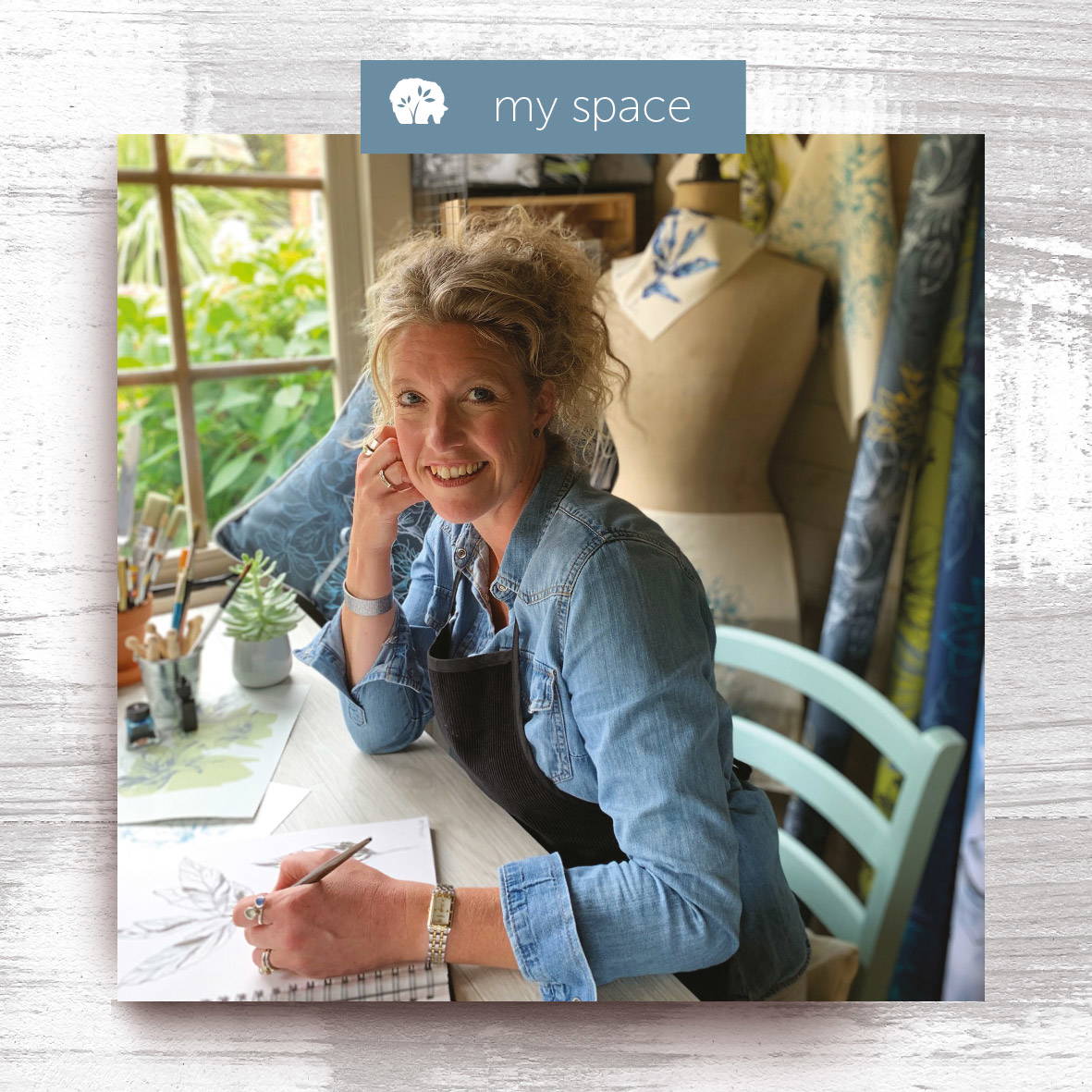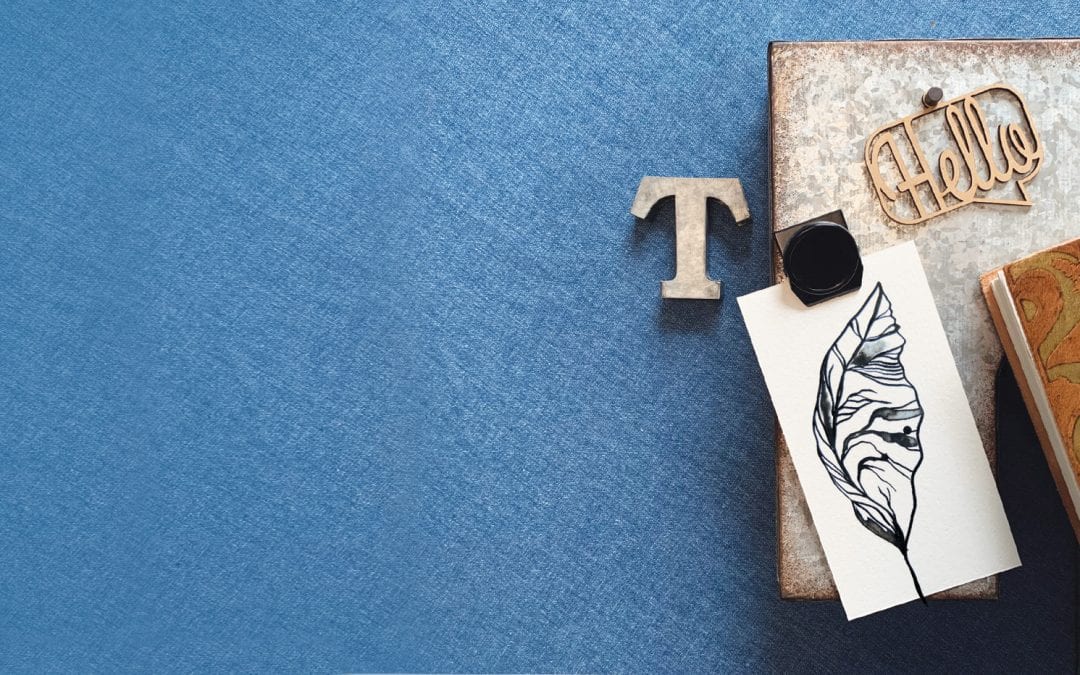CREATIVE SPACE
With every new year comes a time to look forward. Time to start a fresh new chapter and try new things, so here I am writing my first blog post.
As a nature inspired surface print designer, my first creative language is visual. I work with imagery, pattern and prints, creating a selection of homeware and accessories. However, I find writing therapeutic as the artistic process often starts by putting pen to paper to formulate thoughts and ideas.
My first post is for those who are thinking of setting up a small creative space. Maybe a corner to find some quiet time doing something you love or even dedicating space to start up a small creative business from home. This is an insight into my creative work space. I’ll share some thoughts on what works for me. If you just want a glimpse behind the scenes at Bloom & Bear, then I hope you will enjoy reading it.
Making space for creativity
Time is something most of us have had a lot more of this past year and not wanting to waste that luxury of more time, I decided to clear out the loft in an attempt to create space. Space is a curious thing – we always want more of it and when we make it or find it, we fill it…only to want more of it and so around we go again in a never ending cycle.
Clearing out the loft space made me realize just how much of our lives were wrapped up neatly and packed away in boxes. Each one a time capsule of what we did, what we wore, what we had as children, what we have achieved and what we no longer find to have relevance in our current lives!
The reason for clearing the loft area was to make my dedicated creative space more efficient and adaptive for how I need to use it as my business evolves. Having worked in large global agencies throughout my career, I learnt the importance of space management. You work within the desk space you are allocated and God help you if you stray across the desk boundary into a colleague’s territory. Should your work encroach onto your neighbour’s desk, you’d receive the subtle ‘push back’ manoeuvre! When that goes unnoticed, the ‘big shove’ would occur and so we learn the importance of having our own space and keeping it tidy.
When you work for yourself, you don’t have to worry about drifting into enemy territory – the enemy comes from within. If you’re not careful the space can start to fill up, so think carefully about how you plan your room and keep control of your territory!
Room to be creative at home
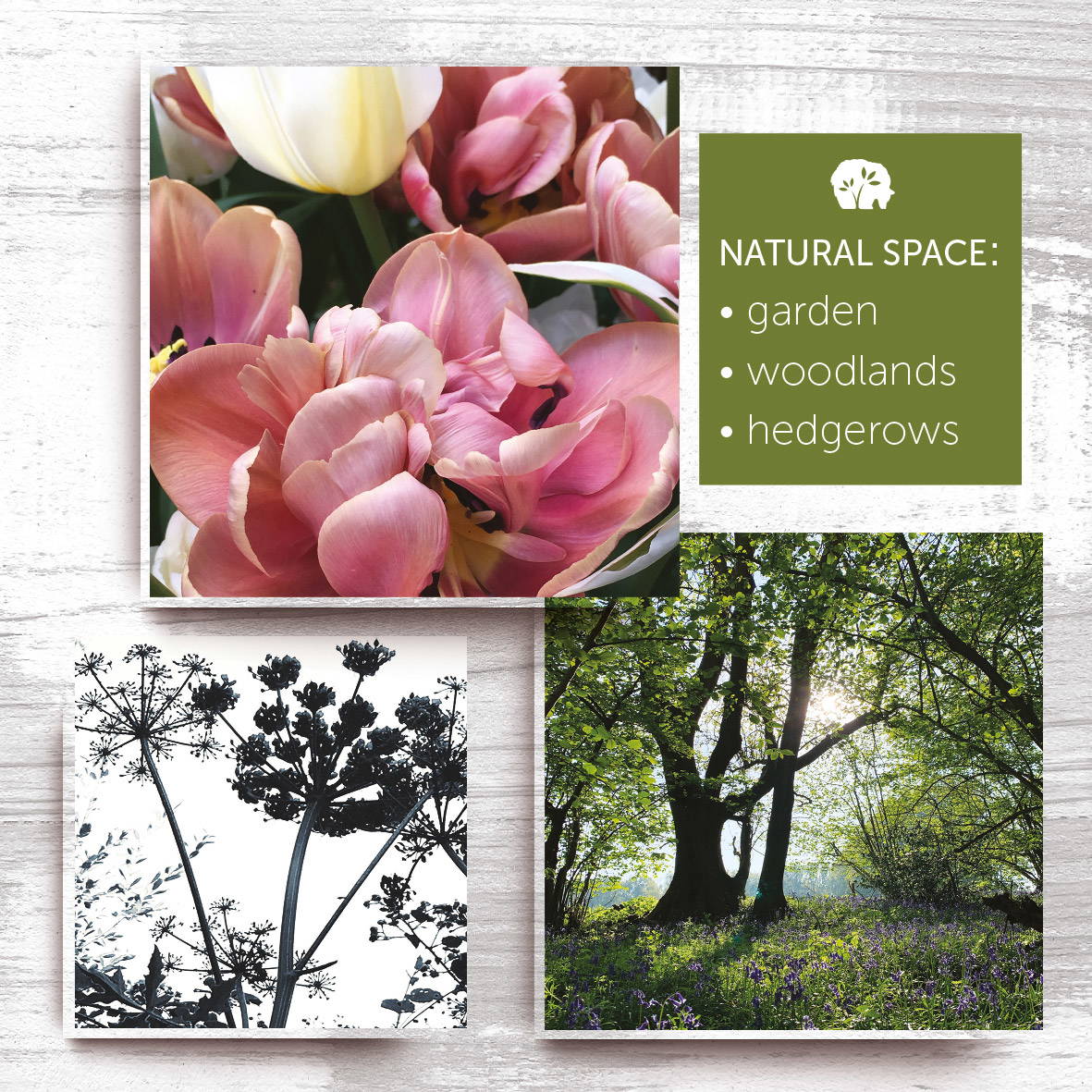
As a designer and maker, my creative head space warrants two separate areas for working, each with a specific purpose. What I use these spaces for, determines how I organise them and also how I style the space to create the right environment that suits my working needs.
The first is a space I crave. A quirky studio space where I can connect with nature. A natural space to be inspired in that allows me to sketch for hours. A space to paint, carve lino and print without worrying about what ends up on the floor. In contrast to this outdoor environment is a second room – a clean, organised and functional making space, where I handcraft my home decor and accessories.
Probably the most important and key space of all is that offered by nature itself, the natural landscape of the great outdoors. My most immediate natural space is the garden and beyond that, the countryside that surrounds us here in Newbury, West Berkshire. These both provide the ingredients that inspire the designs for my surface prints. Natural, wild space is where I feel most inspired. An everyday dog walk can turn into a botanical mission finding exercise collecting reference photos.
I count myself fortunate enough to have two defined creative spaces for working. Ask my husband however and he’ll beg to differ. He’s territorial. He lets me know when I’ve crossed the invisible line by subtly using the ‘push back’ manoeuvre, relocating the offending object from his space back to my space!
The Garden Studio
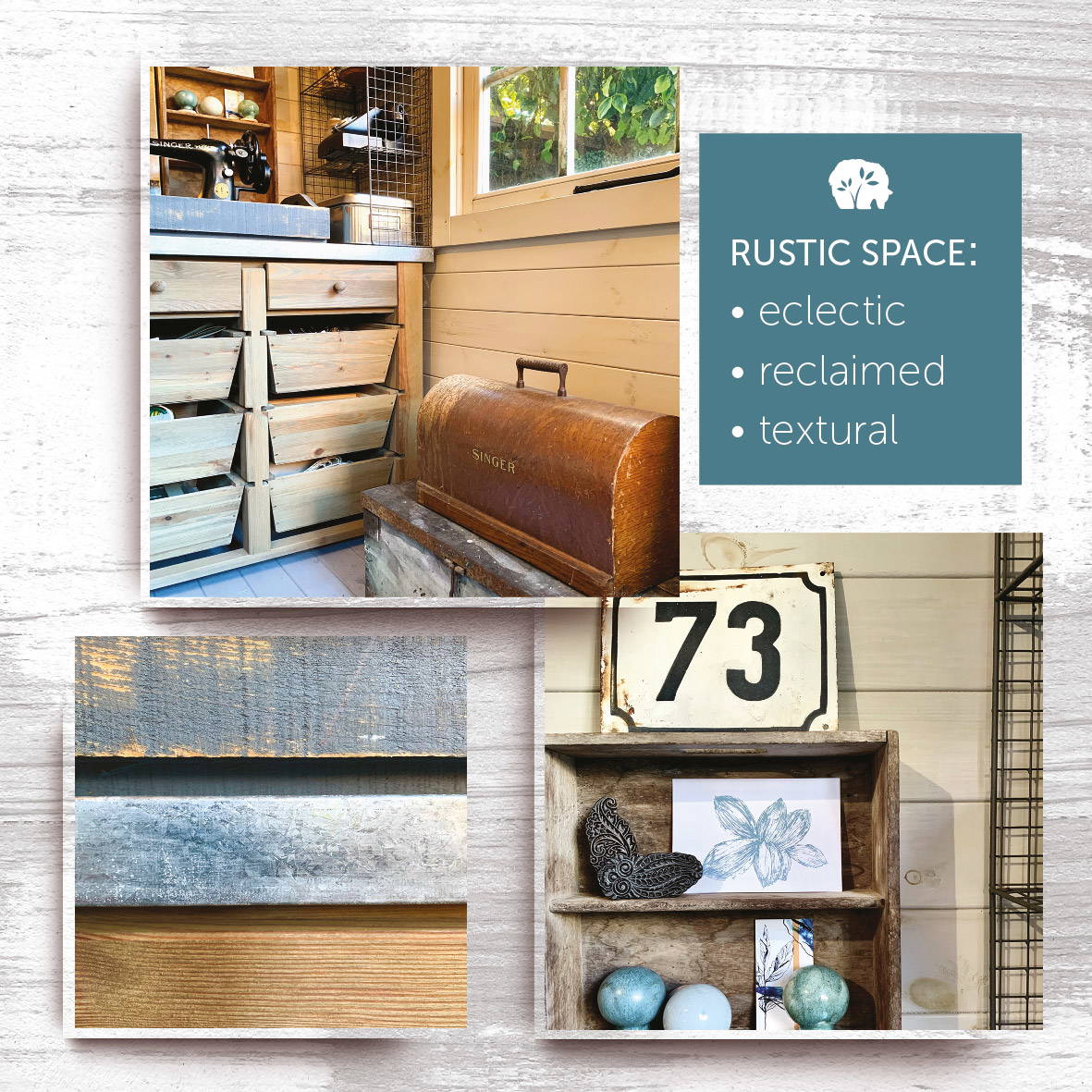
This is definitely my space. A retreat that’s separate from the house and a morning commute of around 30 paces. Bliss. My husband and I built it a few years ago for the purpose of creating a studio space for Bloom & Bear. My head needed to separate the business from the home and my heart longed to be surrounded by the garden flowers that inspire my work. It was paramount that I could see my subject matter every time I looked out of the window.
The studio has a rustic feel. A wooden cabin now weathered on the outside where nature has painted itself into the grooves of the wood. With the change of each season the door either opens with ease as the structure breathes with the summer heat or it reluctantly sticks and creaks under the grasp of winter. In the warmth of summer the studio has an intoxicating aroma of warm wood, flowers picked from the garden and a hint of ‘biscuity dog bed’. In the colder months it’s a case of ‘eau de slight damp’!
The studio is painted inside and out and has two large opening windows. These are always open in summer! The space is naturally lit. I find natural light best for working in, especially when doing colour work – mixing inks or paints. Warm artificial light plays havoc when working with subtle colours and can really strain your eyes. I work at a height adjustable trestle desk, located next to the window. It allows me to spectate on the birds in the garden. In summer, I hear the wood pigeons click-clacking across the roof as they bask in the sunshine above me.
A long mirror on the opposite wall reflects light back into the space. It’s sits on top of a repainted chest of drawers that I use as a work bench and storage for printing hardware. The rest of the space is filled with vintage finds and industrial style pieces picked up from various antique fairs and brocante markets…another huge passion of mine. A vintage wooden wall unit provides a home to display small handmade ceramics. Everything here has texture and patina. Tactile, tarnished and rusty items add individual style to a space. It’s also important that we reuse, re-home and re-purpose pieces that already have a history.
Old wooden crates, wire racks, baskets and hand-me-down furniture have all been put to good use, providing storage and places to display my collections of ‘eclectic bits’. An old singer sewing machine sits on a zinc topped garden work bench with drawers. The bench would look perfectly at home in an allotment potting shed.
This space has to be flexible which means not having permanent fixings. I favour the ‘stack and balance’ method where I‘ll arrange different storage items together. I often rearrange the furniture to allow room for whatever creative mood I’m in. One day I might be sketching blooms from photos and hand-picked flowers. Another day I’ll need more space for renovating a vintage deckchair in readiness for it’s botanical cotton print. Keeping the space flexible and allowing it to organically change is really important.
For me I need to be surrounded by the things I love, including our wiemeraner Mallory who will curl up beside me in his bed. Other elements include ephemera that I’ve collected over the years or have kept from childhood. It’s a collective visual mish-mash which is thrown together to create my own environment.
The studio has electric power for lighting, temperature control and most importantly – the radio. Somehow listening to music just puts me in the right mood. Working in silence is like staring at a blank page – it can be crippling but music frees me up and lifts the spirits – it makes the day brighter.
The whole point of this space is that it’s perfectly imperfect – just like nature. The space is authentic to me and what I do. Even the changing seasons dictate how I work.
The fluctuations in temperature and light levels during the year means it’s not always suitable for all my creative jobs. Screen printing inks can dry too quickly in the screen during warmer weather and card stock that I’m printing on would absorb any moisture in the cooler months. For these creative tasks, I return indoors.
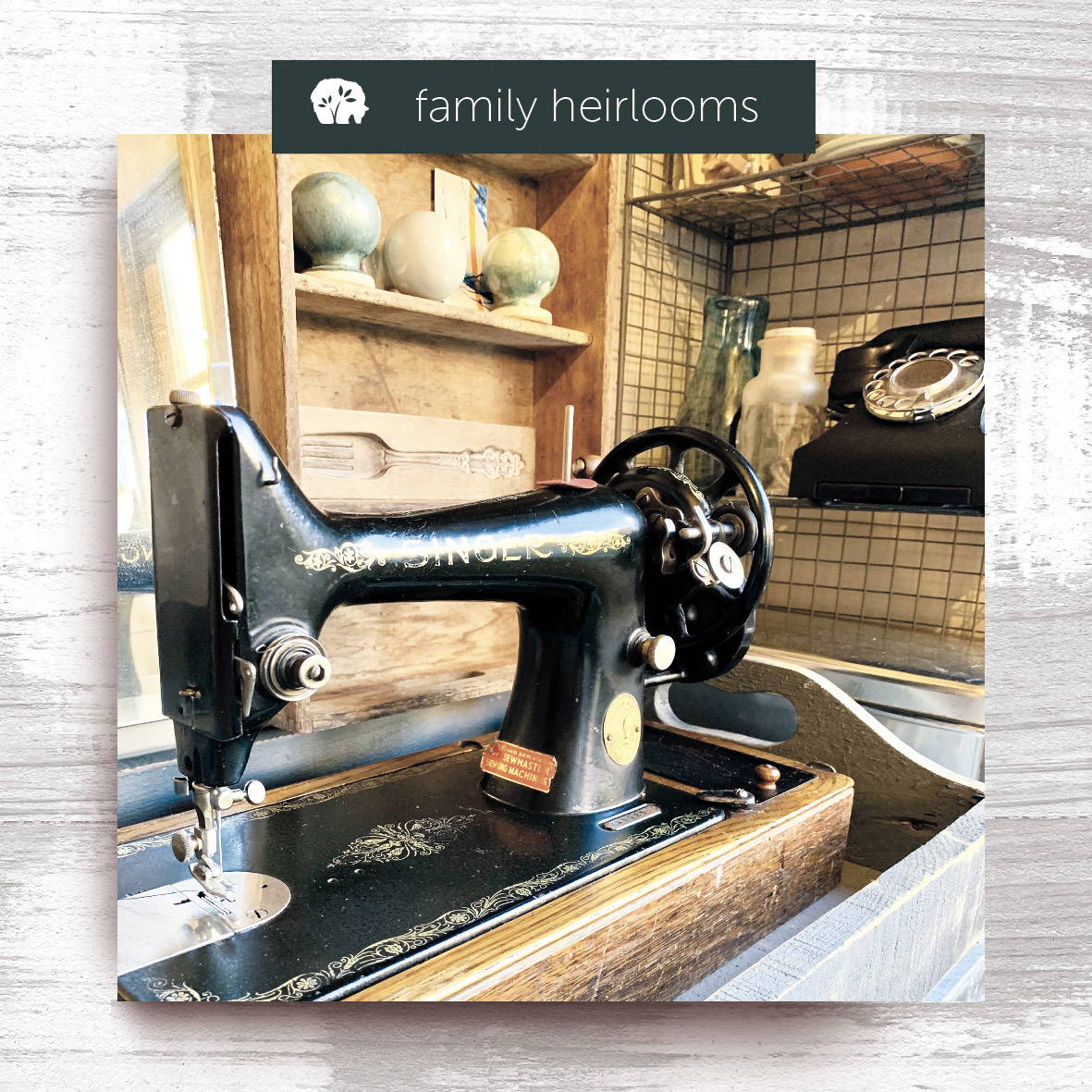
The Home Hub
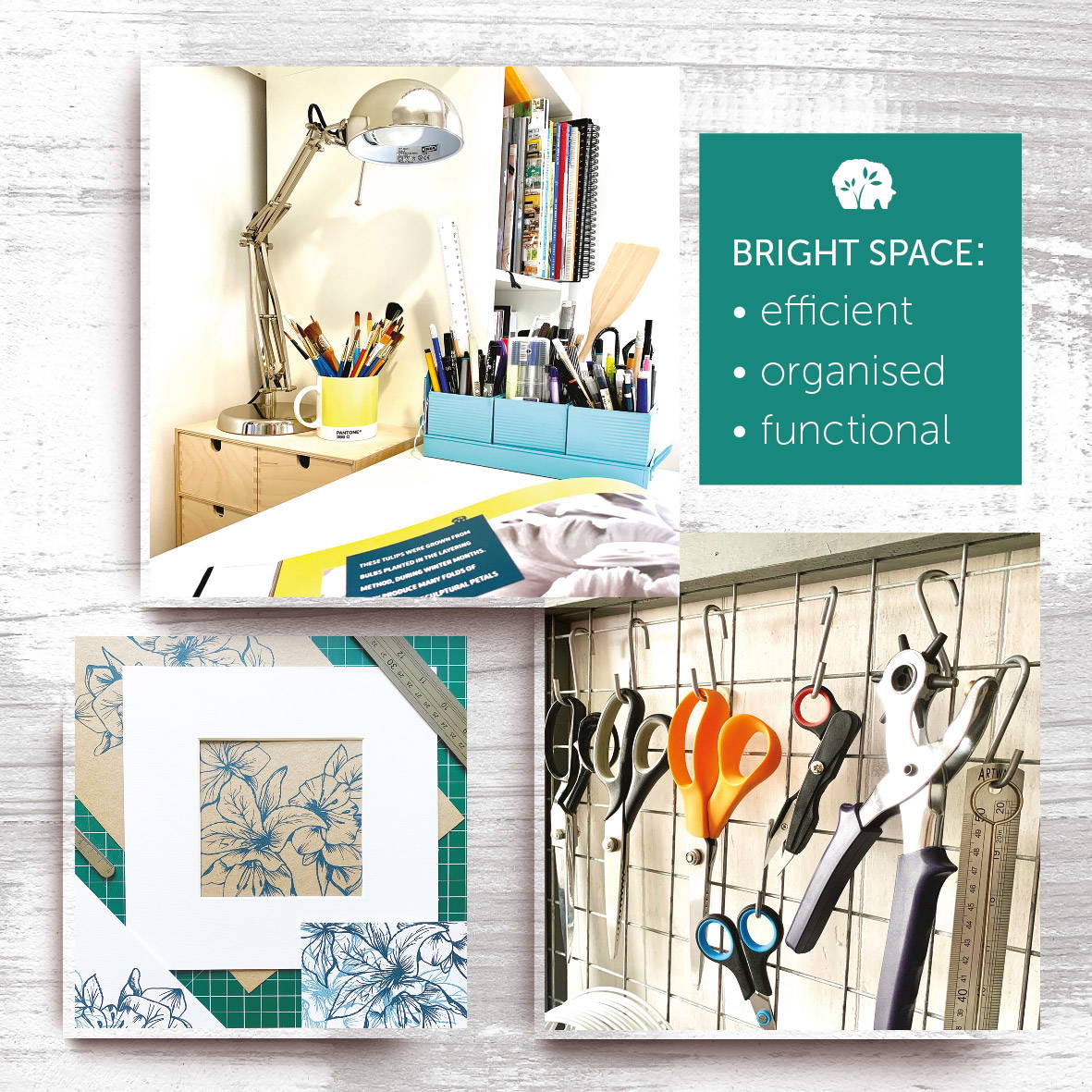
In complete contrast to the rustic wooden cabin is my other creative work space. This room is ‘bright white clean’, functional, ordered and mostly used for storing, cutting and sewing fabrics. It’s my winter retreat with the added luxury of central heating and carpet. Through the window I have a view of a large oak tree that I watch evolve as it loses it’s golden orange cape of autumn leaves to reveal its’ skeletal bare boughs in winter. The tree provides a visual gauge of weather conditions for that all important afternoon dog walk!
As I handcraft collections of botanically inspired homeware and accessories, I have to hand an array of equipment, tools and fastenings. Everything from zips, clips and kits, to tapes, labels, threads and cutting tools all need to be stored and accessed easily. I use small drawers, jars, tins, boxes, and hooks for storage. It’s a place where I can be precise and accurate during the measuring and cutting process. It has to remain neat and orderly.
A space which is home to so much paraphernalia requires regular tidying on a weekly, sometimes daily, basis. If not, things go missing. My aim is to tidy up at the end of each job. A messy room becomes uninviting, frustrating and doesn’t inspire great work but it does help having a door you can just close at the end of each day.
The home Hub is unashamedly decked out with the modern functionality that’s offered by those lovely Swedish folk at Ikea. It’s the go to staple for modular storage solutions. If you do the research, checking your measurements at least three times before leaving home, then there are a 1001 combinations of drawers, cupboards and compartmental storage units that you can stack up to the ceiling. Keeping your creative life in order is essential.
The Hub space is also where I store paper and card stock. My inks and paints need to be kept at room temperature so are tucked away in drawers. Stackable crates keep fabric offcuts and remnants tidy and allow the fabric to breath. I adapted my desk by adding wheels to one end so it can be pulled out or pushed back to give more room. It provides my surface for cutting, sewing, wrapping and packing – not forgetting the all important paperwork side of the business too. It’s where the cutting templates are drawn, the sewing machine whirs and the invoices are accounted for.
As most of the creative work carried out in this space needs precision, often late into the night, lighting is paramount. I use 3 in 1 LED daylight bulbs for when the day starts to fade. With a simple flick off and on again at the light switch, these bulbs instantly turn from a warm white light into a brighter, neutral white light. This set up is really versatile and is much easier to work in. This cooler light makes me feel energised. I also use task lighting – an anglepoise for when my eyes need to get up close and personal with a fastening.
Even though this room is a muilti-functional white space, it doesn’t mean it’s without its touches of decorative styling, biophilic cues and pops of colour. I use magnetic mood boards on which I display things I’ve pulled from magazines, odd sketches and general imagery that I use for inspiration. An upcycled letterpress draw hangs on the wall and houses a collection of eclectic, miniature ceramics.
Surrounding myself with my prints and designs also adds personal character to the room. Displaying work is a great reminder of what can be achieved and also inspire ideas for what is yet to come.
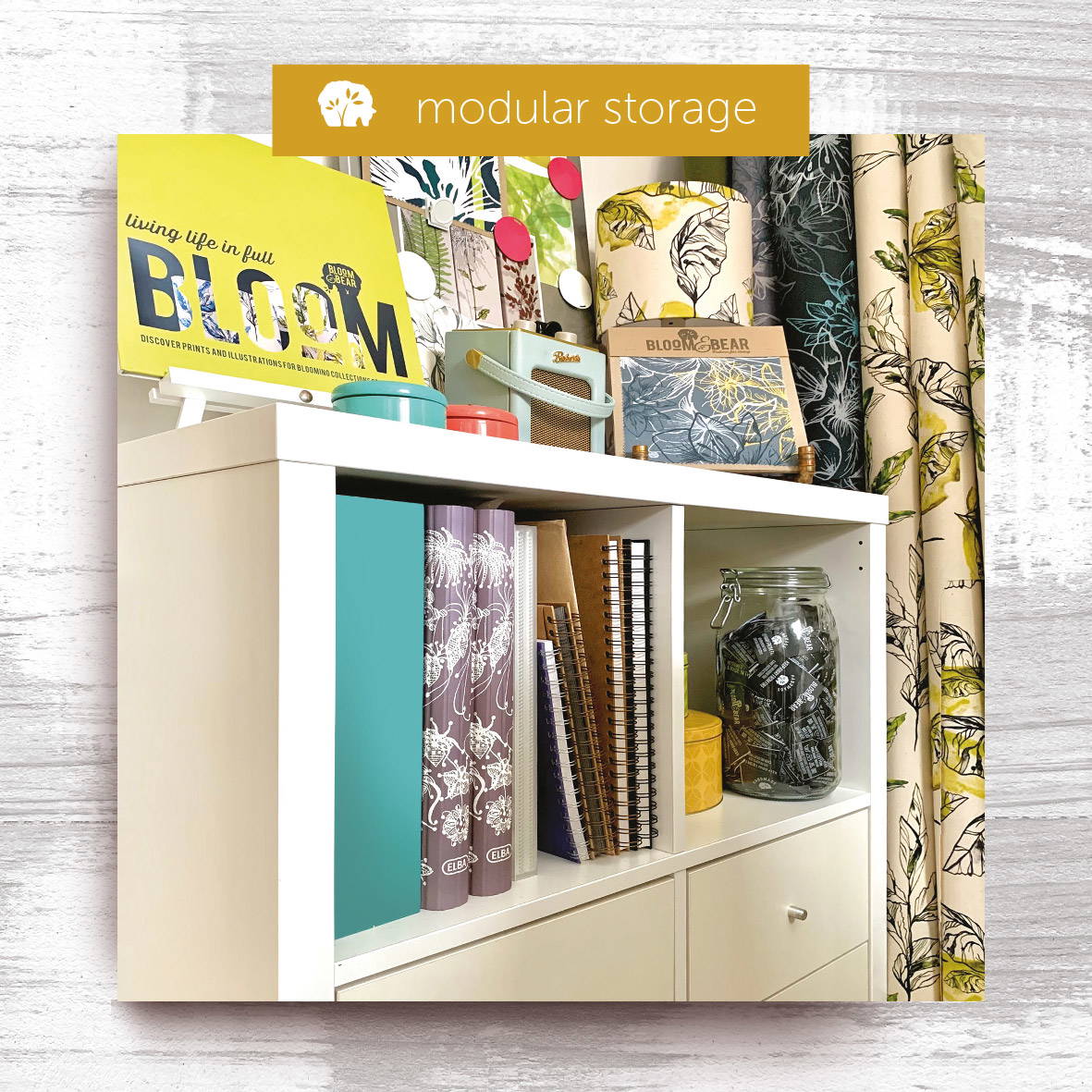
Setting up your own creative space
Creating a work space in a home environment has great advantages. It allows you the control necessary to perhaps build from scratch or adapt an existing area or room. Getting your head in the right creative space is helped by personalising the environment you work in. Every studio or workroom is different because they reflect the individual that creates within them. If you’re thinking of setting up your own creative space, engage your senses to help make it perfect for you. A successful space will support you, allowing you to not only be efficient in how you work but effectively impact your mental wellbeing. It can help you feel energised, engaged and inspired. As well as the practicalities of furniture, storage and lighting, simple visual cues like colour, inspirational imagery and decor all play a huge part in creating the right environment. Other sensorial elements might include fragrance, fresh air, tactile textures, materials, music and even natural sounds. You just have to make it your own. My recommendations are to make it:
• Personalised – unique to you and your work
• Inviting – to be in and work in effectively
• Practical – for the purpose it was created for
• Tidy – especially if working from home
• Flexible – to allow for different creative tasks
• Inspiring – a space for ideas to flow easily
• A sanctuary – somewhere to escape to and focus
• A home – to you and your creativity
